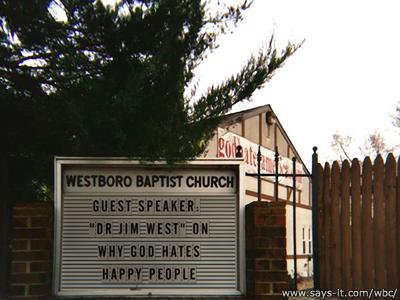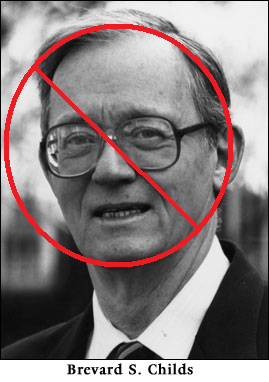
James F. McGrath is Associate Professor of Religion at Butler University in Indianapolis, Indiana. His newest book, The Burial of Jesus: History and Faith (Booksurge Publishing, 2008,) is without question a good read.
The book is imminently readable and at 142 pages, easily digested. It is not a scholarly tome – there are no footnotes, no critical interaction with other historical Jesus scholarship, and many areas where he could have elaborated but chose not to. Rather, this is a book written by a biblical scholar for a popular audience.
McGrath has three primary goals: to introduce the average reader to the historical reasearch methods employed by biblical scholars, to put those tools to work in the historical study of the burial of Jesus, and ultimately to convince the reader that a bodily resurrection did not take place and is not a necessary component of Christian faith. This last goal is not explicitly made public in either the title or the opening chapters of the book, but by the time the reader arrives at the the final pages, there can be no mistake that this really is high on McGrath's priority list.
Chapter 1 – Introduction
McGrath shares his concern in the opening chapters about two elements of contemporary religious life in America. One is the proliferation of conservative Evangelical and fundamental strains of Christianity. The other is the popularity of television documentaries that seek to show "what the scholars have discovered" and then present often sensationalized or one-sided claims – claims that seem more oriented around drawing a large audience than around dealing in a thorough and reasoned manner with historical and archaeological material. So McGrath is annoyed by both of these. And in response to that he has produced this book.
He notes also in the first chapter that since the claims that Christians make are often historical (e.g. Jesus lived, Jesus died, Jesus was buried) it is simply a requirement that the tools of historical study be employed to investigate what happened. It would be ridiculous to make historical claims and then resist the attempts of historians to evaluate them.
Chapter Two – Research Methods
McGrath spends chapter two laying out his argument for how historical research in Gospel studies should be done.
He does a good job of laying out the tools of historical research. In general, historians have access to ancient records (in our case, gospel narratives, Pauline epistles, other early documents) and archaeological finds (signets, cookware, weaponry, etc.) It is the job of the historian to examine this data and draw conclusions. No historian worth his or her salt would ever accept written sources uncritically. As a result of this, Prof. McGrath will expose the biblical narratives to the same kind of critical inquiry. And he is not afraid to reject biblical sources that display evidence of tampering.
McGrath then proceeds to use the tools of historical critical biblical study to examine the Synoptic Gospels. He does a fine job outlining what is the majority opinion among New Testament scholars today: Mark was written first; Matthew and Luke used Mark as a source; Matthew and Luke seem to have shared a second common source that we often refer to as Q; Matthew has some material that is totally unique to his Gospel; so does Luke. A careful reading of this material will help one realize that these are not wild claims that are invented by an imaginative scholar, but rather are reasoned conclusions based upon careful examination of data.
Based upon his work here, McGrath concludes that Matthew and Luke have heavily modified the original story for theological and rhetorical purposes. As a result, they are not reliable as historical sources. This conclusion will become very important when he later examines the burial of Jesus.
Chapter Three
In chapter three, McGrath puts to work the historical research methods that he laid out in chapter two. Due to his conclusions there, he will use the Markan account almost exclusively. He draws the following conclusions.
It is virtually indisputable that Jesus existed and that he was crucified. While history will encounter some who from time to time seek to deny these facts, the historical record is really rather clear. It is also virtually certain that Jesus really did die. Theories about how Jesus could have survived crucifixion are most unlikely.
He concludes that the words ascribed to Jesus as he hung on the cross are in all likelihood fictive. He concludes that Jesus' body was in all probability laid in a mass criminal's grave, used often for the purpose of entombing crucified criminals. The likely motive for the Sunday visit of Jesus' followers was to get the body out of this dishonorable location and to give the body of their fallen leader a more proper burial. The whole tradition surrounding Joseph of Arimathea, the desire of the woment to anoint the body, the existence of the guard at the tomb – all are rejected as unhistorical.
What we can conclude, therefore, is that Jesus lived, he was crucified, he died, and the body was missing on Sunday morning. As an historian McGrath is willing to concede that it is possible that the body rose from the dead. But he does not believe that the tools of historical inquiry can reach that conclusion. (And since he believes those are the only tools suitable for historical research, he does not draw that conclusion.)
Chapter Four
One might expect a book entitled The Burial of Jesus to end at this point. McGrath continues his exploration, however, to investigate what happened after the tomb was found empty. (He is particularly interested in examining New Testaent experiences with the resurrected Lord because as a Christian, he believes that they are still happening.)
McGrath examines Paul's testimony and notes that Paul has no empty tomb references. He then points out that "all such details which emphasize the physicality of Jesus' resurrection body are in the latest of the New Testament Gospels: Luke and John" (106). He concludes concludes in chapter four that it was not the existence of an empty tomb that created resurrection faith, but rather encounters with the risen Christ.
Chapter Five
Chapter five is McGrath's attempt to lay out what resurrection and faith look like in light of his findings. He briefly examines Christian beliefs regarding concepts such as eternal life, final judgment, the immortality of the soul, and the like. Among other things, he draws the following conclusions. New Testament authors speak of eternal life not as "going to heaven whe you die" but rather something to be experienced on earth. In the Bible, judgment is more often than not something you need to be concerned about while on earth. A non-corporeal resurrection of Jesus corresponds more clearly with what Christians have believed regarding their own fate. "If it makes sense to regard eternal life as something non-bodily, then surely the appropriate action is to regard Jesus as having entered eternal life in precisely the same way and same form as will eventually happen to all" (130). This corresponds to the concept of Jesus as forerunner.
Conclusions
The Burial of Jesus by James McGrath is definitely worth purchasing and reading. For those unfamiliar with how historical work is done in Christian academic contexts, McGrath provides a wonderful primer. If you are a biblical scholar, you may find this book very valuable as a resource to share with friends or students who are looking to understand historical scholarship. All in all, I thoroughly enjoyed this work.
by Nelson Moore
post scriptum
I would like to thank Chris Tilling Really Very Holy Ministries for the opportunity to present this material. May Tom Wright be blessed.













